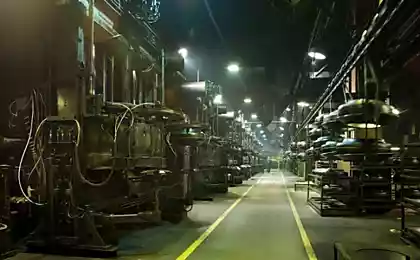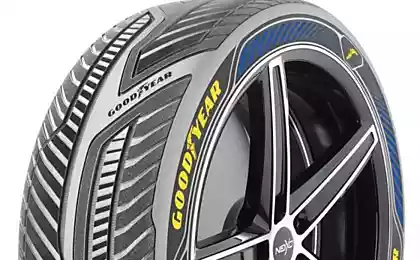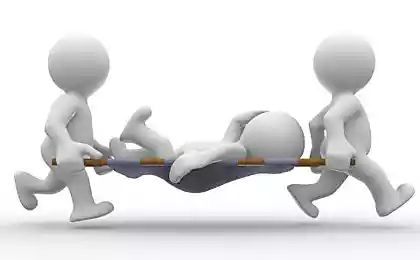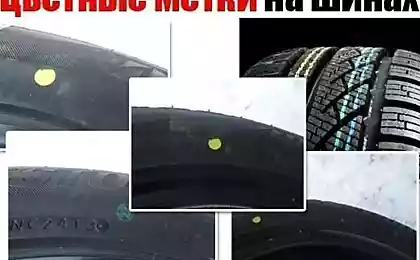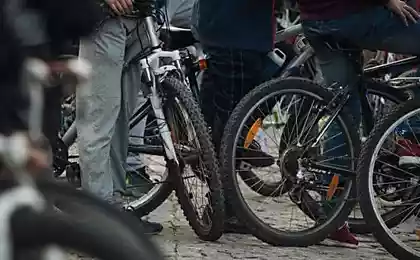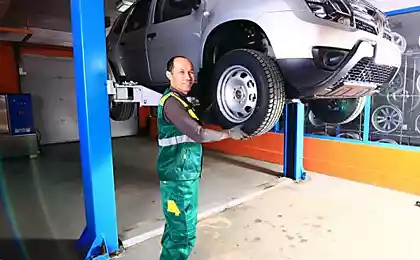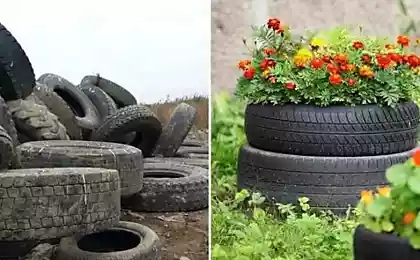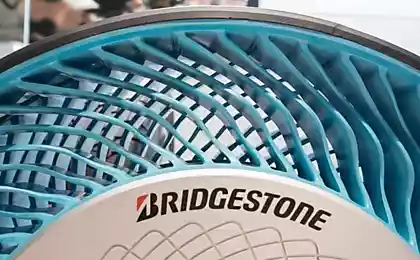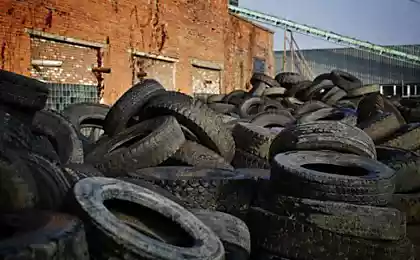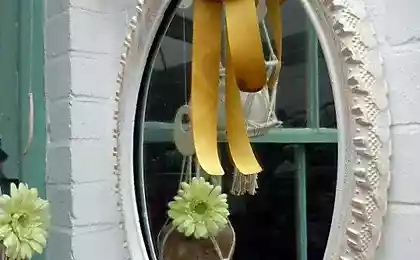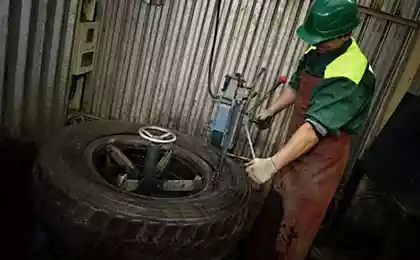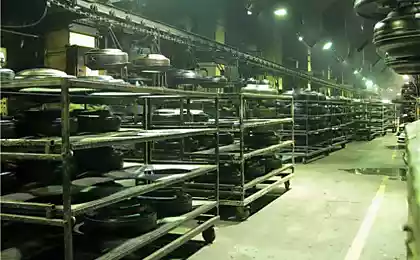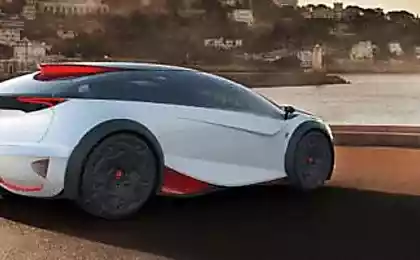554
Tire recycling: technologies and equipment
Recycling of tires and rubber products is one of the most pressing problems, from the number delivered by the world's automotive industry to humanity. Typically, waste tires that have exhausted their service life, reduced at present to dispose them in the nearest "convenient" location, or disposed of in a landfill. It is unlikely that this method can be called environmentally friendly, because in natural conditions the tire decompose over a hundred years.
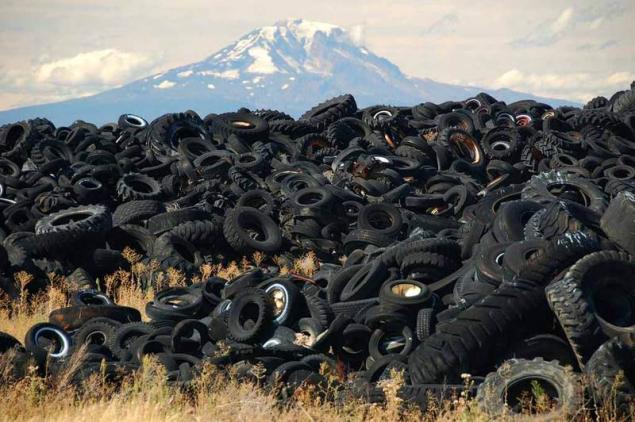
Since July 2006 the European Union is legally prohibited to burn and bury in the ground used tires. In this regard, many countries have begun to actively seek alternative means of disposal. The equipment for processing of tires is not cheap, but it pays off within one year to three years and then brings the net profit. At the University of Wisconsin (USA) have developed a method for recycling tires, which they filled with liquid nitrogen. Tires become brittle as glass, they get crushed and the raw materials used in the construction of the pavement. The tests showed excellent friction coefficient of such a road with car wheels and the lowest noise level. The cost of the raw material of tire does not exceed the cost of asphalt. The American bill of transport supported the application of reinastella that allowed the use of up to 30% of used tires accumulated annually in the United States.
Your option of the use of old tyres and Bulgarians - cal professionals (rubber plant in Picaridin). They have several years of producing rubber sleepers for railway tracks in the mines. Such ties have several advantages: 3 times cheaper than traditional (concrete), better absorb impacts and dampen noise and resistant to mine waters, they do not need the ballast of gravel, and at the end of the service life of the sleepers can be re-processed. But perhaps the most environmentally friendly way of recycling old tires patented at Columbia University (USA). In a special container they are biodegradable by microbes to produce chips for fertilizing fields. Currently, there are about a dozen processing technology of tyres.
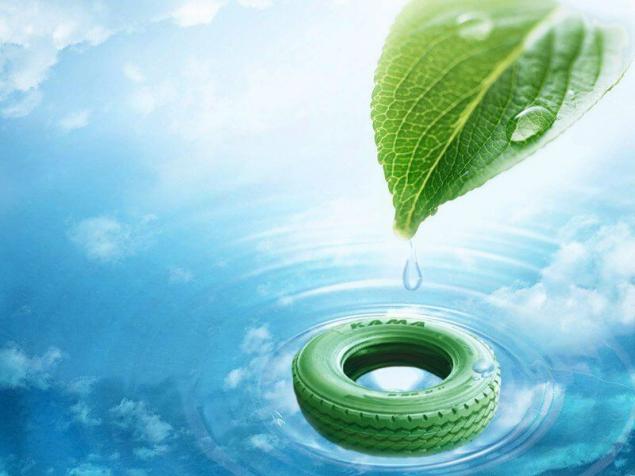
Water-jet method. Technology is an environmentally friendly process: in a special cell bus is attacked by jets of water under high pressure. Water pulls out pieces of rubber, which are then separated in a special separator. The result is a crumb size of 0.05–1 mm. power Consumption is 1 kW·h per 1 kg of produced rubber. This technology is characterized by high quality of the product and does not require large production areas.
Therm-destruction method. This technology involves pre-crushing tires into large pieces, which then are loaded into a special chamber, where under high pressure and temperature rubber like liquid is pressed from the steel cord. The resulting baby has dimensions of 0.8 mm. unfortunately, a complete cleaning of steel cord is not possible, therefore, to provide additional cleaning of steel cord or its disposal. Ozone technology is considered one of the prospects - tion. After removal of the bead wire tire cut into 4 pieces and placed in a special chamber where it is exposed to ozonoterapia gas and simultaneous mechanical stress. In the process, the ozone destroys the connection rubber, and mechanical impact can develop microcracks. In the end,, tires just showered with metal frame. The resulting powder is not sticky, and a particle size of less than 0.1–0.2 mm.
Mechanical crushing. After removal of the bead rings, the tire is cut into 4 pieces and passed through special rolls, destroying it. Then large chunks of rubber-cord design is crushed and separated from the rubber cord. Crushed and separated rubber crumb obtained. Crumb rubber is used to produce secondary rubber products (mats, sleeves, etc.). Unfortunately, in this case, too, fails to completely clean steel cord, so its secondary use as scrap for - trunilina, and sometimes impossible. At the same time, one of the indisputable advantages of mechanical method is low cost.
The thermal method. Processing of tyres in a high temperature involves several difficulties, however this process requires expensive equipment. The result of the process is decomposition of the rubber component, therefore, the distribution of crumb rubber is out of the question. The gas produced in the pyrolysis process, is used here. The system is completely closed, and emissions to the atmosphere there. The energy balance allows to create on the basis of the company new production and supply of thermal energy to local consumers.
Vzryvozaschischennaya technology of recycling of tires compared to others based on the concept of replacement of the means of destruction with a traditional manual on the blast from the explosion products circulation. And the explosion is known to be the strongest and cheapest destructive in nature. Without a doubt, this technology has enabled a breakthrough in the field of recycling of tires.
The Russian market is represented by the following domestic reprocessing of scrap tires. South Ural industrial company uses the technology of recycling tires and plastics into high-grade fuel for the boiler. The complex on processing of waste tires and plastics include: setting a reactor, scissors for shredding tires and 3 of the crucible to discharge. The given installation-reactor is capable of processing 5 tons/day of feedstock (scrap tires).
ZAO "SPF "NOVOTEKH" is the design and construction of plants for processing of old automobile tires based on technology vzryvozaschischennaya tire grinding was developed by design Bureau of the company. All equipment is designed and manufactured in Russia. Technology and the plant's products are presented under the brand name EXPLOTEX®.
Company "Turbothermic" and "conso-a" offer of environmentally friendly technological line for processing of worn tires using a low-temperature cooling. "Company "DECAP" – mobile facility for processing (recycling) of worn tires with metal and textile cord and tyre combined diameter of up to 2 thousand mm – KFS-01, which is a mini plant with full cycle of processing end-of-life tyres.
In industrialized countries there is state funding, laws that encourage recycling and use of products recycling of rubber, carried out various subsidy schemes. The strategy of the EEC is:
• waste prevention;
• recycling and reuse of materials;
• optimization of final treatment of waste;
• regulation of transportation of waste;
• to conduct activities for the rehabilitation of the environment;
• in the education of the population in the spirit of rational consumption;
• the inclusion of environmental parameters in the quality standards of the products.
In our country, the main initiator of the decision problem is the state, however, budget financing, with all its limitations and difficulties is not conducive to the implementation of profitable projects. It is necessary to create comprehensive state programs aimed at the organization of the collection, temporary storage, processing and market development, food consumption and recycling of tires.published
Source: www.solidwaste.ru/publ/view/629.html

Since July 2006 the European Union is legally prohibited to burn and bury in the ground used tires. In this regard, many countries have begun to actively seek alternative means of disposal. The equipment for processing of tires is not cheap, but it pays off within one year to three years and then brings the net profit. At the University of Wisconsin (USA) have developed a method for recycling tires, which they filled with liquid nitrogen. Tires become brittle as glass, they get crushed and the raw materials used in the construction of the pavement. The tests showed excellent friction coefficient of such a road with car wheels and the lowest noise level. The cost of the raw material of tire does not exceed the cost of asphalt. The American bill of transport supported the application of reinastella that allowed the use of up to 30% of used tires accumulated annually in the United States.
Your option of the use of old tyres and Bulgarians - cal professionals (rubber plant in Picaridin). They have several years of producing rubber sleepers for railway tracks in the mines. Such ties have several advantages: 3 times cheaper than traditional (concrete), better absorb impacts and dampen noise and resistant to mine waters, they do not need the ballast of gravel, and at the end of the service life of the sleepers can be re-processed. But perhaps the most environmentally friendly way of recycling old tires patented at Columbia University (USA). In a special container they are biodegradable by microbes to produce chips for fertilizing fields. Currently, there are about a dozen processing technology of tyres.

Water-jet method. Technology is an environmentally friendly process: in a special cell bus is attacked by jets of water under high pressure. Water pulls out pieces of rubber, which are then separated in a special separator. The result is a crumb size of 0.05–1 mm. power Consumption is 1 kW·h per 1 kg of produced rubber. This technology is characterized by high quality of the product and does not require large production areas.
Therm-destruction method. This technology involves pre-crushing tires into large pieces, which then are loaded into a special chamber, where under high pressure and temperature rubber like liquid is pressed from the steel cord. The resulting baby has dimensions of 0.8 mm. unfortunately, a complete cleaning of steel cord is not possible, therefore, to provide additional cleaning of steel cord or its disposal. Ozone technology is considered one of the prospects - tion. After removal of the bead wire tire cut into 4 pieces and placed in a special chamber where it is exposed to ozonoterapia gas and simultaneous mechanical stress. In the process, the ozone destroys the connection rubber, and mechanical impact can develop microcracks. In the end,, tires just showered with metal frame. The resulting powder is not sticky, and a particle size of less than 0.1–0.2 mm.
Mechanical crushing. After removal of the bead rings, the tire is cut into 4 pieces and passed through special rolls, destroying it. Then large chunks of rubber-cord design is crushed and separated from the rubber cord. Crushed and separated rubber crumb obtained. Crumb rubber is used to produce secondary rubber products (mats, sleeves, etc.). Unfortunately, in this case, too, fails to completely clean steel cord, so its secondary use as scrap for - trunilina, and sometimes impossible. At the same time, one of the indisputable advantages of mechanical method is low cost.
The thermal method. Processing of tyres in a high temperature involves several difficulties, however this process requires expensive equipment. The result of the process is decomposition of the rubber component, therefore, the distribution of crumb rubber is out of the question. The gas produced in the pyrolysis process, is used here. The system is completely closed, and emissions to the atmosphere there. The energy balance allows to create on the basis of the company new production and supply of thermal energy to local consumers.
Vzryvozaschischennaya technology of recycling of tires compared to others based on the concept of replacement of the means of destruction with a traditional manual on the blast from the explosion products circulation. And the explosion is known to be the strongest and cheapest destructive in nature. Without a doubt, this technology has enabled a breakthrough in the field of recycling of tires.
The Russian market is represented by the following domestic reprocessing of scrap tires. South Ural industrial company uses the technology of recycling tires and plastics into high-grade fuel for the boiler. The complex on processing of waste tires and plastics include: setting a reactor, scissors for shredding tires and 3 of the crucible to discharge. The given installation-reactor is capable of processing 5 tons/day of feedstock (scrap tires).
ZAO "SPF "NOVOTEKH" is the design and construction of plants for processing of old automobile tires based on technology vzryvozaschischennaya tire grinding was developed by design Bureau of the company. All equipment is designed and manufactured in Russia. Technology and the plant's products are presented under the brand name EXPLOTEX®.
Company "Turbothermic" and "conso-a" offer of environmentally friendly technological line for processing of worn tires using a low-temperature cooling. "Company "DECAP" – mobile facility for processing (recycling) of worn tires with metal and textile cord and tyre combined diameter of up to 2 thousand mm – KFS-01, which is a mini plant with full cycle of processing end-of-life tyres.
In industrialized countries there is state funding, laws that encourage recycling and use of products recycling of rubber, carried out various subsidy schemes. The strategy of the EEC is:
• waste prevention;
• recycling and reuse of materials;
• optimization of final treatment of waste;
• regulation of transportation of waste;
• to conduct activities for the rehabilitation of the environment;
• in the education of the population in the spirit of rational consumption;
• the inclusion of environmental parameters in the quality standards of the products.
In our country, the main initiator of the decision problem is the state, however, budget financing, with all its limitations and difficulties is not conducive to the implementation of profitable projects. It is necessary to create comprehensive state programs aimed at the organization of the collection, temporary storage, processing and market development, food consumption and recycling of tires.published
Source: www.solidwaste.ru/publ/view/629.html
